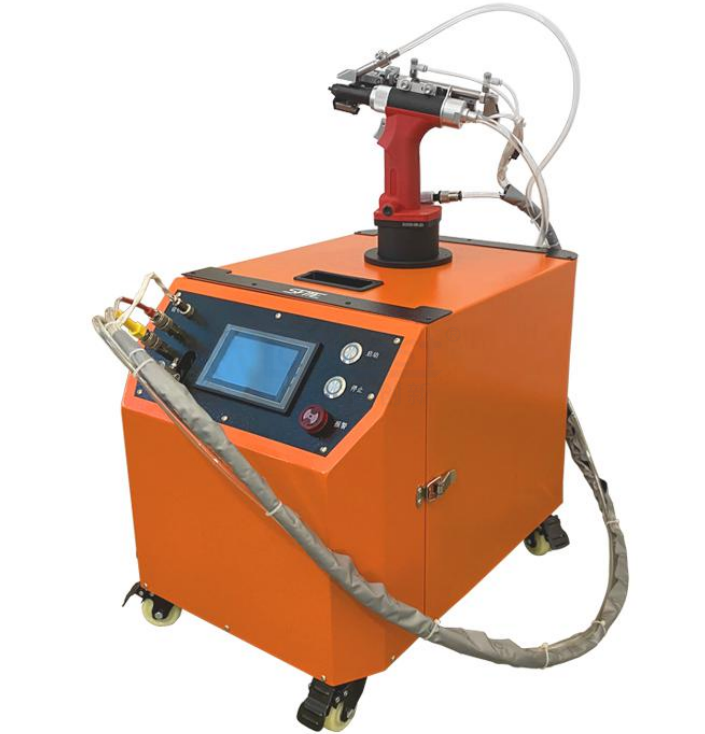Riveting machines are essential tools in various industries for joining materials by forming a rivet through them. Rivets are used to create strong and permanent connections between components. These machines come in different types, each designed for specific applications and requirements. Here are some of the most common types of riveting machines:
Pneumatic Riveting Machine: Pneumatic riveting machines use compressed air to drive the riveting process. They are suitable for various applications and offer adjustable pressure and speed settings, making them versatile for different rivet sizes and materials. These machines are known for their consistent and reliable performance.
Hydraulic Riveting Machine: Hydraulic riveting machines use hydraulic pressure to form rivets. They are particularly well-suited for heavy-duty applications that require high force. Hydraulic machines are known for their strength and ability to handle larger rivet diameters and tougher materials.
Impact Riveting Machine: Impact riveters deliver rapid, controlled impacts to the rivet, deforming it and forming the joint. These machines are commonly used for applications where high-speed riveting is required, such as in automotive and electronics industries. They are ideal for mass production settings.
Spin Riveting Machine: Spin riveting machines rotate the rivet while applying axial force, creating a friction-based connection. These machines are often used for applications where a vibration-resistant joint is needed. They are suitable for materials that are difficult to pierce, like plastics or certain metals.

Squeeze Riveting Machine: Squeeze riveters use two opposing dies to press and form the rivet, creating a strong connection. They are commonly used in aerospace and automotive industries where precision and reliability are critical. Squeeze riveting ensures consistent joint formation.
Radial Riveting Machine: Radial riveters apply force radially to the rivet, causing the shank to expand and form a tight connection. These machines are used for applications where a particularly strong and vibration-resistant joint is required, such as in structural components.
Orbital Riveting Machine: Orbital riveters rotate the rivet around the joint while simultaneously applying pressure, creating a friction-based connection. These machines are known for their ability to create uniform and aesthetically pleasing joints, making them suitable for decorative or visible components.
CNC Riveting Machine: CNC (Computer Numerical Control) riveting machines are automated systems that use computer programming to control the riveting process. They offer high precision and repeatability, making them suitable for complex or intricate riveting patterns.
Manual Riveting Machine: Manual riveting machines are hand-operated tools used for smaller-scale applications or when the production volume is limited. They require the operator to manually apply force to form the rivet.
Robotic Riveting Machine: Robotic riveting systems use robotic arms to perform riveting tasks. These systems are highly flexible and can be programmed to handle various riveting patterns and materials. They are often used in industries where automation and customization are crucial.
In summary, riveting machines come in various types, each designed to meet specific application needs and production requirements. The choice of the right type of riveting machine depends on factors such as the materials being joined, the desired joint strength, the production volume, and the level of automation required.
264
0
0
All Comments (0)
Previous: Quality Control in Maize Flour Milling Plants: Ensuring Excellence in Standards
Next: Unlocking Precision and Efficiency with Gas Pressure Sintering Furnace
If you are interested in sending in a Guest Blogger Submission,welcome to write for us!
Comments